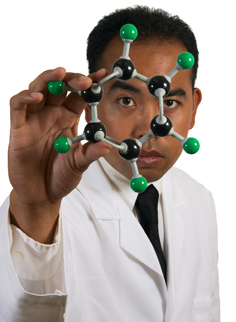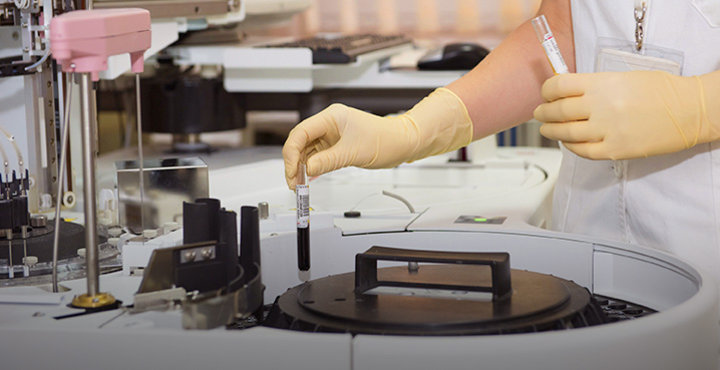Helpful lab report formatting tips
 Proper lab report format is important
Proper lab report format is importantIn Part One of this series, we discussed 10 key lab report writing tips. In this installment, we shift the focus to lab report formatting and the overall organization of information. In Part Three, we will discuss the typical citation style of lab reports.
Elements needed for correct lab report format
Lab reports consist of eight specific elements. While authors of scientific papers have a bit more leeway when it comes to overall organization, they should try to incorporate elements of the following lab report format into their finished product.
Cover Page
This includes the title of your lab report as well as your name, the current date, the day of your lab studies (e.g., Monday, Thursday), and the name of a lab partner or colleague if you have one. This page should be very informative and should stand out, perhaps by including a sentence that summarizes your results. The cover page is initially the most viewed portion of your report. This page may be looked at by many scientists, so be sure it includes the right amount of information.
Introduction
This should serve as an outline for your lab report—what you already know about the subject as well as what you have discovered from your scientific experiments—by providing some background information to the reader. In the second section of the introduction, describe some specific questions you have chosen to study, but write about them in a general way. The details pertaining to those questions will be written about in the Methods or Results section later.
If you need to include a hypothesis (a theory or theories), state it specifically at the end of the Introduction. Some lab reports require this and some do not, so check with your professor.
Methods
Remember to use the past tense of verbs to describe your research, since the experiment has already been completed by the time you write your lab report or scientific paper; for example, "The properties of this compound were found to be…" However, the lab report itself, theory, and permanent equipment still exist; therefore, use the present tense when describing these:"The purpose of this report is…" or, "The experiment produces this result…" This section should include a brief outline of the various methods used in your study. If certain details are cited as having been done before by other scientists or are referenced in your lab manual, you can refer the reader to these sources rather than re-writing the entire description, remembering to cite them properly according to the style guide you are using (e.g., the Council of Science Editors' Scientific Style and Format: The CSE Manual for Authors, Editors, and Publishers). If you are referring to a method in which something has been changed, however, you must address this properly within the text by thoroughly explaining the change in this section.
Your methods should be detailed enough so other students and scientists can duplicate your procedure. For example, give accurate descriptions of measurements, times, and expected results.
Results
Always begin this section using normal text format, as opposed to figures and table details. For example, indicate what a table is going to demonstrate and summarize the significant data it contains before displaying the table. The same holds true for figures and other types of charted information. Remember to remain focused and organized here to ensure clarity.
Heavy editing is often required in this section of a lab report. Remember to be consistent and use the least amount of words necessary to convey your statistics. Only the important points of each table or figure need to be briefly explained in the normal text. Leave the details to the charts.
Discussion
In this section, which is considered the most important part of lab report formatting, you can be a bit more creative and elaborate by interpreting your results, expanding on them, and noting general conclusions. Here are a few guidelines:
- Start with the major conclusions of your lab report, i.e., does your study support or contradict the hypothesis in question?
- Next, expand on the discussion of your results by citing other studies. Remember to reference these studies using proper citations within the body of the text and in the APA References page at the end of your report.
- Suggest some original ideas or interpretations of the study you conducted.
- Finally, you may want to suggest some improvements in the methods of experimentation or recommend ways of improving the reader's understanding of the subject. Remember, it is not a crime to achieve a negative result during your lab work (which can be simply noted as "no significant change was observed").
References
In the body of the lab report itself, a citation normally consists of the last name(s) of the author(s) and the year of publication (Randolph, 1998). This is then expanded upon in your References section. This is a must whenever you cite a source within the body of text so the reader knows immediately where you acquired your information.
In the References section at the end of your report, you will list any books, publications, or websites you cited in the report.
You may wish to list your "References and Notes" of a literary nature—i.e., book or journal form—separately from a "Supporting Online Material" heading, wherein you would list any websites from which you have taken information.
List only those works you have actually referenced in the scientific paper. Remember, this is not a bibliography, which would involve listing books and other works you reviewed but did not find necessary to include in your report because they did not specifically pertain to your study. Therefore, a References section includes only those works you refer to in the text itself.
List names alphabetically by last name, as well as the year of publication, title, publisher location, and publisher, as follows:
Randolph, M. (1998). How to write proper references for Lab Reports. New York: Academia Press.
This is a general example. Format varies slightly when citing journals and websites; refer to your style manual for specifics. Keep in mind that referencing format differs according to the many style manuals used in the world of publishing (e.g., APA, Chicago Manual of Style, CSE), so it is wise to be clear about the particular format and style guide you are using.
Appendix
You may wish to include an appendix (or appendices) at the end of your report on a separate page (or pages). Check with the journal or professor you are submitting your work to for their specific requirements. An appendix lists your raw data—that is, your calculations that lead you to your conclusions—or any graphs or charts used but that are not necessary to include in the body of the text. Each type of item should be included in a separate appendix (i.e., Appendix A, Appendix B). Also, refer to an appendix at least once in your Results section; for example, "Data compiled from this group of tests are listed in Appendix A."
- Appendices will allow your professor or reader to see how your knowledge and results were acquired. Placing the appendices on separate pages will not interfere with the clarity and conciseness of your report.
Useful further reading
Check with your professor about this section of your lab report; this is a noteworthy segment because it suggests other works and /or websites to which the reader can refer to acquire further knowledge of your subject. These works should also be referred to on a separate page, but should be cited in the same style as your earlier References section. For example:
McGill, Ian. (2003). A brief excerpt on herbal remedies of Southeast Asia. New York: Global Press, p. 9.
Once again, remember to check the style guide you are using to determine the proper format for all your references.
General lab report format tips
Nothing makes a lab report appear less convincing than misspelled words, so make sure you read and re-read your report before submitting it to your professor or for publication. You want readers to believe in your ability and the knowledge you have gained. A lab report or scientific paper illustrates all the hard work you have done; therefore, showcase that work in a well-written, professional style! If you have doubts about your lab report format, don't hesitate to submit your paper to our academic editors.



